Shimano Wheel Review 2012 and 2013
Some of you think that they just don’t care. They’re stuck in their own little world… going about their business… making whatever they want to – and you better buy it. I mean, why not have that attitude? When your sales volume dominates the market and your reputation is good, you can do just about whatever you please.
Ahem. C’mon guys. They’re just bikes. We’re not saving lives or fighting aliens here. Who am I talking about? Shimano. Yes, the Japanese manufacturer of bicycle parts and fishing reels. My attempt at a cheeky introduction was simply to express that I don’t understand the opposition I often see to this company on internet forums and product review websites. Are they perfect? Of course not. And neither is any other manufacturer out there. But are they really trying to keep you down like ‘the man’? I highly doubt it.
My test set of C50 clinchers, below:
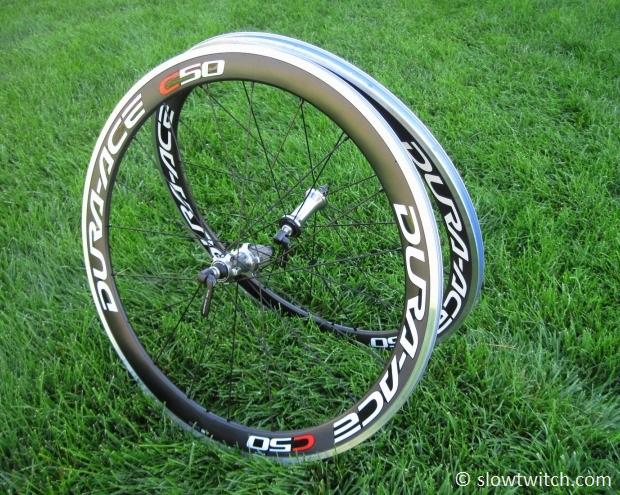
For the past decade or so, our triathlon world seems to have drawn a conclusion: If you want fast wheels, they only come from brand H or brand Z. Nobody else makes wheels that are fast. What does “fast” mean – at least to a triathlete? Slippery-slick and aero-tastic. Let the divine word of the drag chart tell the entire story of a wheel. Mind you, this is in stark contrast to the roadie world, in which the divine word of the gram scale sums up a product’s worth. Unless you haven’t realized it already – I don’t buy either argument for a second.
Do weight and aerodynamics matter? That’s like asking if race-morning port-a-john stench ranks on your list of top-10 worst smells. Of course! But… and here’s where the devil’s advocate part of my job description comes in… are those attributes everything you ought to consider in a wheel? And are they everything that determines whether a wheel actually helps you ride fast? Let’s investigate.
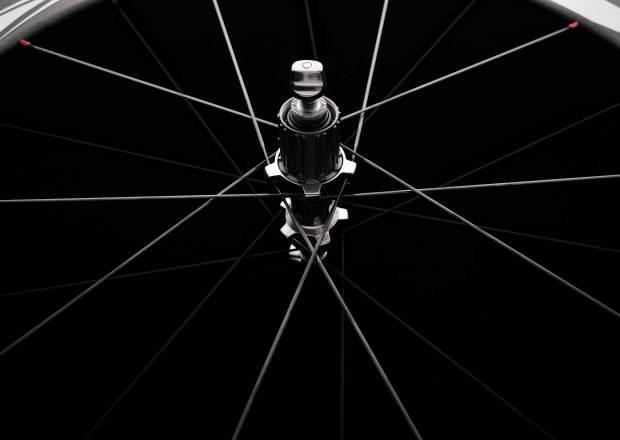
Shimano Wheel History
Don’t worry, I’m not going to bore you with a year-by-year synopsis of product detail and part numbers. I don’t think that really matters. Let me be very up-front: I think Shimano’s track record in wheels does not live up to the high standards set by their other components. Shimano seems to be driven by a culture of quality. Having watched their product evolve over time, the one standout feature that has always impressed me is consistent quality. I wondered – are they doing 100% QC on every part that goes out the door? I doubt it, but it sure seems that way sometimes. The finish quality is great, the parts are friendly of poor frame tolerances, and the stuff just tends to work well for a long time.
That precedent having been set, their wheel line-up always puzzled me. The hubs have always been outstanding – no doubt. Hubs are one of those things that we never want to worry about, and the Shimano product delivers a homerun in this respect. But the rest of the wheels never blew me away. The names were never catchy; always an alphanumerical jumble that didn’t tell me anything about the product. The rims seemed to have good braking surfaces, which was a plus.
What was my real beef with them? In a few words – indecision on how to properly build a wheel. They waffled between locating spoke nipples at the rim, and at the hub. They experimented with j-bend and straight pull spokes. Spoke nipples were hidden inside the rims one year, and exposed the next. I have personal experience with an older mid-level wheel with hub-located spoke nipples that just would not stay true for more than a two months at a time. There was so much potential, and such a lackluster delivery.
But that’s changing.
As it stands in 2012, Shimano has a solid wheel line-up. Driven by years of development with ProTour teams and top-level triathletes such as Craig “Crowie” Alexander, the Japanese firm has been forced to make improvements. While they’re still not perfect, I’d like to outline why they deserve your consideration the next time your wheel-purchasing habit kicks in.
Shimano’s wheel production in Malaysia:
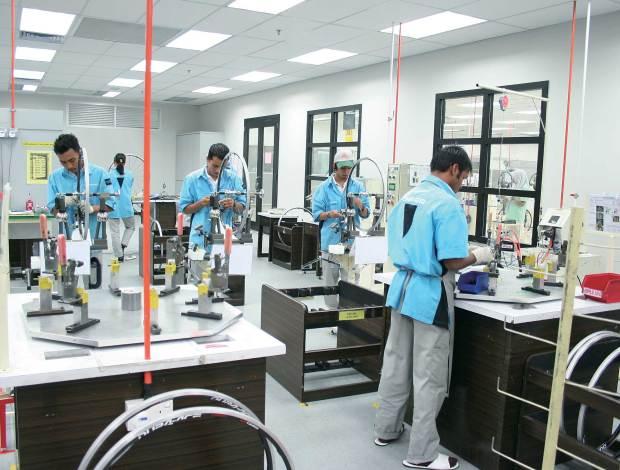
Current Shimano Wheels
For those not familiar, I’ll take a quick run over the key products in the 2012 Shimano road line-up. Luckily, we see Shimano beginning to put some “real” names on products, rather than relying solely on the lengthy alphanumeric combinations. As well it looks like the spoke-nipples-at-the-hub business is finally over. Gone are the days of removing the cassette to true your wheel.
On the carbon side of things, there are four flavors of Dura Ace: C24, C35, C50, and C75. As you can guess, the numbers refer to millimeters of rim depth. The C24 is a shallow section wheel, available in standard clincher or tubeless-specific clincher. The C35 and C50 are the mid-section offerings, available in clincher or full-carbon tubular. The C75 is available in full carbon tubular only (although it appears to have very limited distribution to the US market). All of these wheels feature the trademark Dura Ace hubs and bladed spokes (16 front, 20 rear in all models).
The aluminum side begins at the top with Ultegra 6700, pictured below. I love these wheels. Why? They hit the right price point, have great hubs, and have clearly improved over previous quality standards. The weight is where it needs to be, and the cherry on top is road tubeless compatibility out-of-the-box. I personally think it’s a shame that these wheels don’t see more airtime on showroom floors.
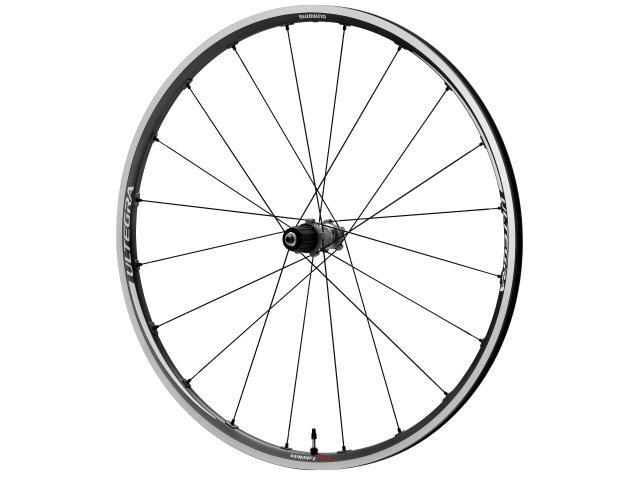
Below that there is a complete line of “Road Sport” wheels. Unfortunately, Shimano still relies on confusing names for these. WH-RS80-C50-CL and WH-RS80-C24-CL are essentially cheaper versions of the 50 and 24mm Dura Ace carbon wheels (with effectively Ultegra-level hubs). From there you’ve got a variety of aluminum wheels at various depths, weights, and price points: WH-RS30, WH-RS20-A, WH-RS20-L, WH-R501-30-S, WH-R501-A. Lucky for you, most of these wheels are generally sold as OEM equipment on bikes at your local dealer… so you don’t need to bother trying to remember the names. Most people buying an aftermarket set of Shimano wheels will shop from Ultegra and up.
Shimano also has an offshoot brand called PRO, which offers a carbon disc wheel – but it is unfortunately not distributed in the USA at this time. You’ll continue to see it under sponsored pro athletes, but I have no idea what keeps them from selling it to us mere mortals.
Shimano’s production boasts a traceability program to track every wheel through the build process. If there’s a problem, they can apparently trace it back to a specific day, wheel builder, and rim production batch.
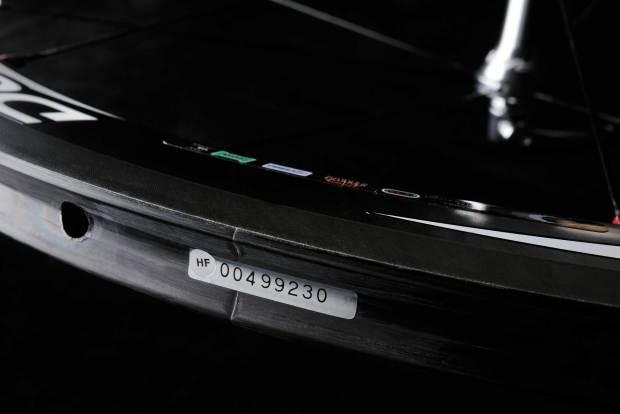
Check that chart…

“Ok, cool. They have carbon wheels. Quality is good, weight is average, but you haven’t said anything about aerodynamics. If it ain’t aero, I ain’t interested.” Easy there, Tex. We’ll get to that.
The key take-home for the current wheels is this: They work. And that’s the beauty of it. You could argue that the Achilles heel of all Shimano wheels is that they don’t excel at any one thing. The cursed jack-of-all-trades and master of none. Mind you, I think that is an incorrect assumption. They do excel at one thing, and that’s reliability. Sure, problems can happen with any manufacturer, but my experience with the latest Shimano wheels has been outstanding. Ride in the rain? Go for it. Mud, sweat, Gatorade, and pretending your bike is a 112-mile toilet? No problem. The hubs continue to roll smooth, and all parts of the wheel resist corrosion very well.
As for the rest of the attributes – weight, aerodynamics, etc – I agree. Most of the competition has product that looks more impressive on paper. Reynolds’ RZR is lighter. Mavics are stiffer. Hed and Zipp are more aerodynamic. That is the crux of it all – and why I think Shimano has struggled to gain a real foothold in aftermarket wheel sales. In essence, they have a great story to tell; they just aren’t very good at telling it. I’ve ridden competitors’ wheels and experienced poor braking, creaking hubs, or bearings that literally fail in a single rainy Ironman.
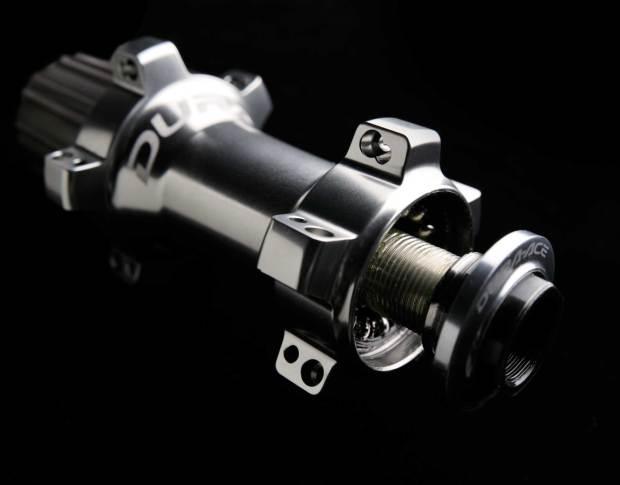
Unfortunately, selling based on reliability isn’t sexy. Contestants on The Bachelorette aren’t parading around with their Encyclopedia Britannica. “Look at me! I’m so… vanilla. But I’ll never let you down!” We want something that revs our proverbial engine. In all areas of consumerism, most people tend to buy based on the idea that the product will somehow make their life better (which is almost never the case, unfortunately). And often, there is a hidden cost that they’re not telling you about. They’ll never say, “Our hub is really light… BUT the bearings will need to be replaced every six months… and the tool required to do so costs several hundred dollars.” Whoops! Look over there – squirrel!
The beauty of the Shimano wheel line, and indeed most of their products, is the fact that they tend to design not for an attractive spec sheet, but an intelligently-designed product that functions in real-world conditions. The grumpy old mechanic in me loves that. Most of you are busy people with jobs, children, pets, chores, and social lives. Even I struggle to find the time for basic maintenance on my personal equipment – and my job is this.
Step off your soap box…
After all this narrative, I hope to offer some sort of tangible take-home based on personal experience. Specifically, I’ve had the opportunity to ride both the Dura Ace C24 and C50 clincher wheel sets for several months. Thus far, they’ve performed as-expected: I didn’t notice a thing. I was able to train without interruption. The C24 doesn’t strike me as something that most triathletes would be interested in racing on, simply due to the shallow rim depth and lack of true aerodynamic performance. They ride smooth and confident, and would likely do very well for the roadie crowd seeking a relatively light clincher option.
My C50 set. Not a bad lookin’ set of wheels.
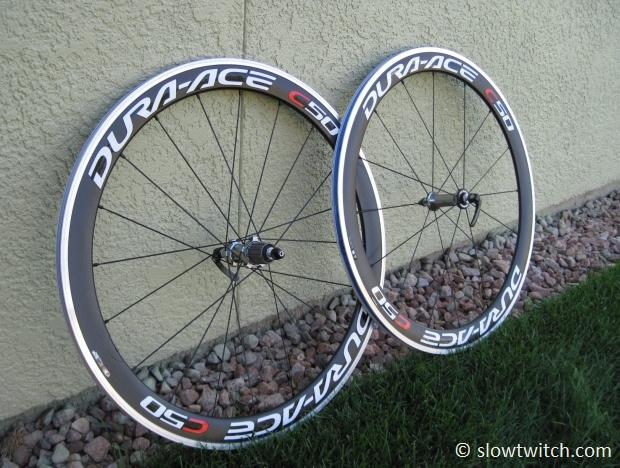
The C50 is a wheel that strikes me as the busy person’s race wheel. Is the 50mm rim on-par aerodynamically with some of the bulbous-shaped competition? Not likely. But it is certainly faster than your basic training wheel. The braking is super consistent in wet or dry conditions, especially with standard Dura Ace pads. This is a braking surface that will help you out-brake your competitors and corner faster – if you’re in to that sort of thing.
The C50 rim has several tiny drain holes to let water escape:
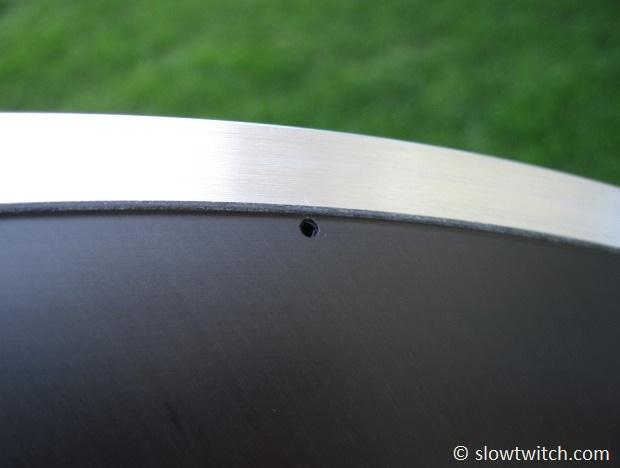
Some of you may question the fact that Shimano doesn’t make a full-carbon clincher rim. My guess is that this is due to the same reason that always holds Shimano back from releasing products as fast as the competition: If it doesn’t meet their standards of safety, function, and reliability – they don’t sell it. I can respect that. Many of you have seen photographs of existing carbon clincher product on the market that has experienced a heat-related failure. If you have a heavy enough rider or a steep enough descent, that brake heat piles up quickly. If the resin in the carbon braking surface has a low enough melting point – you guessed it – it will melt. Given the basic design of all clincher rims, this means a potential failure of the entire bead hook, and a tire that’s coming off the rim in short order. Shimano likely understands this equation and prefers to sell product that they know is safe and far exceeds any heat-related brake testing standards. Their tubular C35, C50, and C75 do feature carbon braking surfaces, but this type of wheel has been sold by many companies for over a decade, and has proven to be reliable.
As you can see, the valve hole area is reinforced – somewhat reminiscent of Reynolds and Lew wheels:
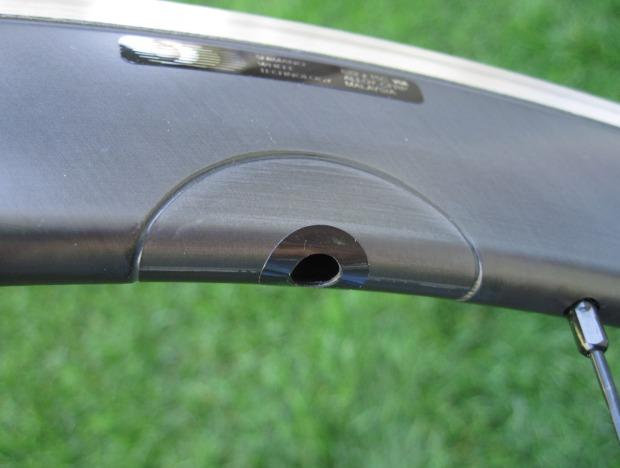
The hidden gem in the Shimano wheel line-up is the fact that all of the road rims share a standard width of 20.8mm. If you ride any of the current “super bikes”, you know how complicated some of the brake systems are. If your training wheels and race wheels are different widths, it could literally take hours of your time to change to carbon pads and adjust the width. Some of the bikes require removal of aerodynamic fairings, swapping various widths of brake washers, and even removing the entire crankset. While a well-seasoned mechanic can generally do this in thirty minutes or less, one mistake can easily double the time (i.e. if you happened to clip a brake cable slightly short and have to re-route a new one through an integrated brake lever, base bar, stem, through the downtube, etc.)
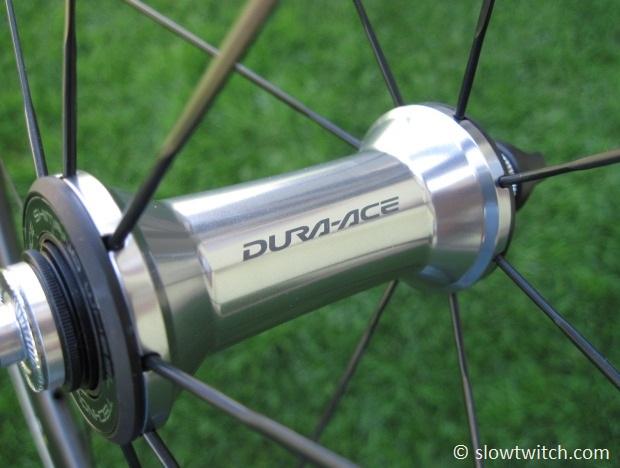
Oh, those beautiful hubs. The best part? The gotta-be-expensive titanium freehub. Almost nobody else does this. It’s lighter than steel, but not as soft as competitors’ aluminum freehubs (which often become damaged as cassette cogs dig into the soft alloy).
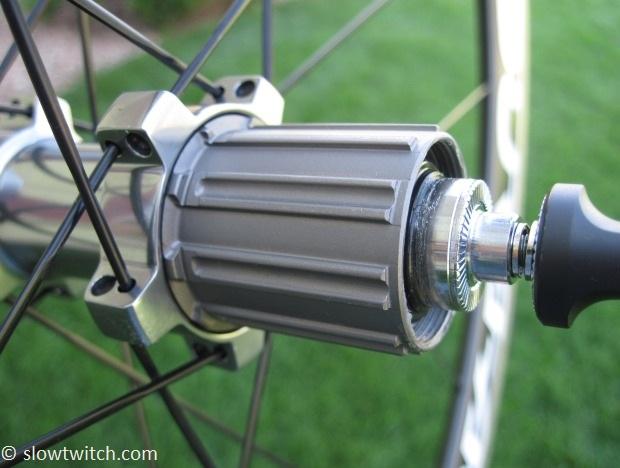
If I was a busy guy, but just had to ride a P5, Shiv, DA, Speed Concept (or similar “super bike”), I’d seriously consider a Shimano wheel setup like this:
Training
Ultegra 6700 wheels
Hutchinson Fusion 3 tubeless tires
2-3oz of Stan’s NoTubes sealant per tire
Racing
Dura Ace C50 clincher wheels
Continental GP4000 S or Attack/Force set
Vittoria latex inner tubes
2oz of Glycol-based sealant, such as Flat Attack or standard Slime per tire
I’d set everything up in December, and wouldn’t have to do a tick on maintenance until about July, when I’d either add more sealant to my training wheels or replace the tires if necessary (Stan’s is latex-based and dries out over time – but is necessary for road tubeless). Or, if I didn’t want to fiddle with tubeless, I’d just throw on a pair of Continental Gatorskins and thick butyl tubes.
Either way, it is a no-hassle setup, and I’d never have to adjust my brakes for racing. If you have a similar setup, pat yourself on the back for making smart choices that improve your chance of training consistently and avoiding a pre-race freak-out (“OMIGOD my brakes are rubbing… but I don’t know how to use this crazy 5mm allen wrench!”)
With each Dura Ace carbon wheel set, you get an accessory kit that includes quick releases, wheel bags, valve extenders, a spoke magnet, spoke wrenches, and even little adhesive donuts (to silence any potential rattles between the valve and rim – a decidedly more elegant solution than my usual electrical tape).
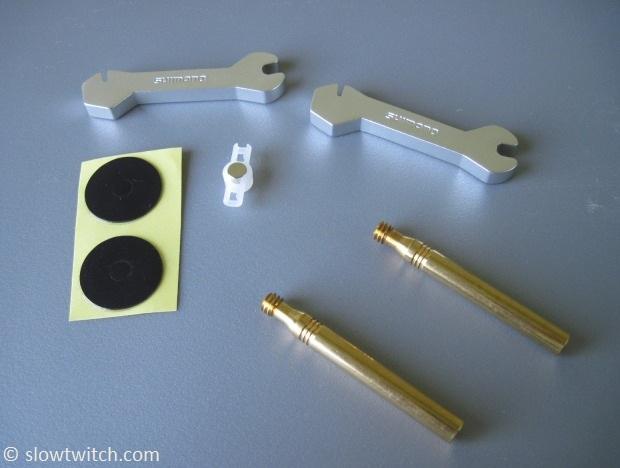
Shimano Wheels 2013
If you’ve made it this far and aren’t asleep, I have a pleasant surprise for you. First, take everything I said in the previous paragraphs and forget it. Shimano has re-written their own playbook for 2013. Remember that whole aero thing? Shimano learned how to do it.
The new wheels fall under the updated Dura Ace ‘9000’ moniker. 9000 is their new 11-speed components series, which require a new wider freehub design. The shallow-section C24 wheels appear to be largely un-changed. You have the same clincher and tubeless clincher options, along with the updated hubs.
The C35 also gets the new hub, and a huge improvement in spoke lacing. They call it “Opt-Bal 2:1 lacing”. This is the same concept as what Campagnolo has done for years – the rear wheel has twice as many spokes on the drive side as the non-drive side. Since that pesky cassette takes up so much space, the drive side spokes sit very vertical, at least in comparison to the non-drive side. This makes the spoke tension very uneven from left-to-right, which compromises stiffness and increases the chance of a broken spoke. With this unique 2:1 spoke lacing pattern, you have half as many spokes on the non-drive side to do the legwork – which doubles the tension on each of these spokes. The result is very even tension all around, and a super durable system.
The C50 also gets the new hub and Opt-Bal 2:1 lacing. But – and here’s where it gets really interesting – the rims are all-new. Dubbed the D2 rim profile, we now get what we’ve been waiting for… wide, complex-shaped rims. The clincher version of the C50 D2 still retains aluminum braking surfaces, but the outside width has grown to from 20.8mm to 23mm. If you ask me, the 23mm clincher rim is the new standard. We see it from Hed, Saris Cyclops, 3T, and Bontrager’s new Aura 5 wheel. The C50 D2 tubular is even wider, at 24mm. While not as portly as wheels like the new Mavic CXR80 – it is a monumental step forward for such a conservative company.
The new C50 tubular:

Lastly, we have the new C75. Similar to the 2012 model, it is available in carbon tubular only. Everything else on the wheel is new, and has the same features as the 50mm model – new lacing, new hub, and 24mm-wide D2 rim profile.
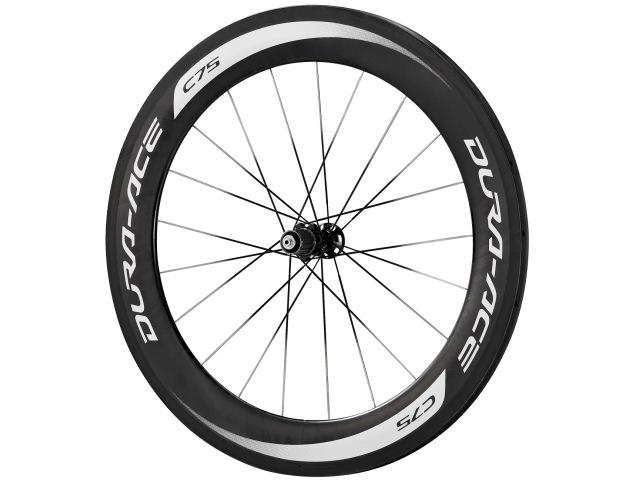
Shimano says that the new 50 and 75mm rim profiles are optimized for 23-25mm tires. This comes as no surprise, and sounds similar to the tire recommendations of other wide-wheel manufacturers. The only tangible downside I see to the new wheels is a switch back to hidden spoke nipples. This isn’t a hassle if your wheel never needs to be trued, but that isn’t always reality. In any case, it is a relatively small concession to make, given the other improvements.
Thus far, I’ve enjoyed my time getting familiar with the 2012 Shimano product, and see bright things on the horizon for 2013 and beyond. The reputation of reliability-at-the-cost-of-aero could be going away forever.
2013 Shimano Dura Ace 9000 wheel specifications:
WH-9000-C24-CL 24mm Carbon/Alloy Laminate Clincher
Carbon laminate construction rim (~383g)
Off-set rim with wide flange hub
100% Ti FH body
1364g
MSRP$1399.99
WH-9000-C24-TL 24mm Carbon/Alloy Laminate Tubeless Clincher
Shimano Road Tubeless and tube compatible rim
Carbon laminate construction rim (~420g)
Off-set rim with wide flange hub
100% Ti FH body
1454g
MSRP $1499.99
WH-9000-C35-CL 35mm Carbon/Alloy Laminate Clincher
Opt-Bal 2:1 lacing
Carbon laminate construction rim (~439g)
Extra wide flange hub (+7mm)
100% Ti FH body
1488g
MSRP $2199.99
WH-9000-C35-TU 35mm Carbon Tubular
Opt-Bal 2:1 lacing
100% Carbon construction rim (~362g)
Off-set rim with extra wide flange hub (+7mm)
100% Ti FH body
1362g
MSRP $2999.99
WH-9000-C50-CL 50mm Carbon/Alloy Composite Clincher
23mm D2 rim profile
Opt-Bal 2:1 lacing
Carbon/Alloy construction
Extra wide flange hub (+7mm)
Hidden nipples
100% Ti FH body
1672g
MSRP $2399.99
WH-9000-C50-TU 50mm Carbon Tubular
24mm D2 rim profile
Opt-Bal 2:1 lacing
100% High modulus carbon construction
Extra wide flange hub (+7mm)
Hidden nipples
100% Ti FH body
1449g
MSRP $3199.99
WH-9000-C75-TU 75mm Carbon Tubular
24mm D2 rim profile
Opt-Bal 2:1 lacing
100% High modulus carbon construction
Extra wide flange hub (+7mm)
Hidden nipples
100% Ti FH body
1545g
MSRP $3499.99



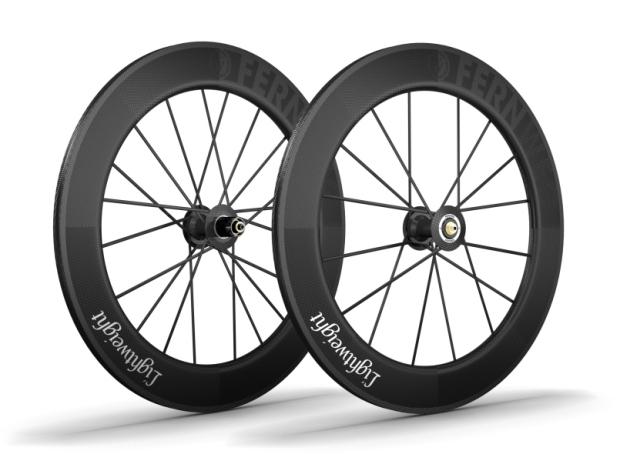
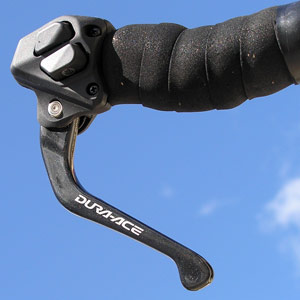
Start the discussion at slowtwitch.northend.network